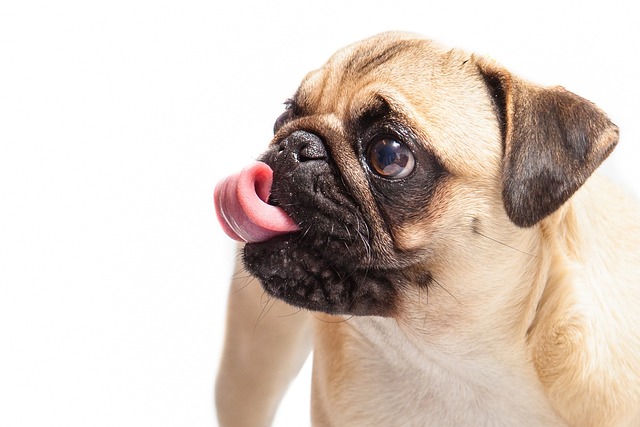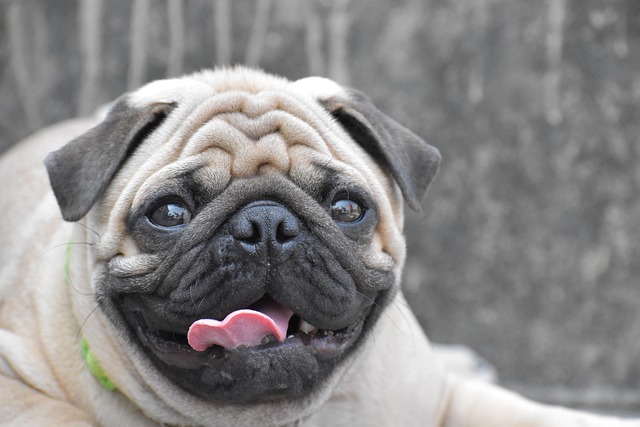
What is glaucoma in a dog?
You might notice your dog squinting more at mealtime or avoiding bright sunlight—these small changes could be early signs of a serious eye condition.
The moment you first lay eyes on a pug, also known as the Chinese pug, its chubby, fluffy, and adorable appearance can instantly capture your heart. The iconic wrinkles on its face are like unique marks left by time, and those big, round eyes always shine with a lively light, as if hiding countless little secrets. And that cute, curly tail is constantly wagging cheerfully, as if announcing its happiness and friendliness to the world. From the moment it steps into your home, it becomes an indispensable member of the family. With its innocent love and endless companionship, it adds countless warmth and joy to our lives. On every lazy afternoon, it quietly lies at your feet and takes a nap; every time you come home from work, it enthusiastically jumps up to greet you. These warm moments make its position in our hearts even more irreplaceable.
However, behind this cute appearance, pugs are prone to a variety of health problems. These issues not only cause pain to their small bodies but also make us, their worried owners, extremely anxious. Therefore, deeply understanding these potential health risks and proactively taking preventive measures are the keys to ensuring that pugs lead healthy and happy lives.
Respiratory problems are a relatively prominent health challenge faced by pugs. As pugs belong to the brachycephalic dog breed, their unique facial structure makes the respiratory tract relatively narrow. Their nasal cavities are short, and their soft palates are relatively long, which leads to obstruction when air enters and exits the lungs. On hot summer days or after strenuous exercise, you may notice that pugs pant heavily, with their tongues sticking out long and their breathing becoming thick and rapid. These are all manifestations of breathing difficulties. Once, a pug owner took the dog to play in the park. After running for a short time, the dog was so tired that it collapsed on the ground, and its rapid breathing was really worrying. So, to reduce the breathing burden on pugs, try to keep them in a cool and well - ventilated environment, such as an air - conditioned room, in hot weather. Also, pay attention to moderation during exercise and avoid long - term strenuous exercise. Gentle activities like walking are more suitable for them, and it is advisable to walk for 15 - 20 minutes each time. In addition, using a harness instead of a traditional collar can reduce the pressure on the neck and make breathing smoother.

Eye problems are also common health concerns for pugs. Their large, prominent eyes, although extremely cute, are more vulnerable to injury and infection precisely because of this. Entropion is one of the common eye diseases in pugs, which is manifested as the inward turning of the eyelids. The eyelashes constantly rub against the cornea, causing eye pain, tearing, and redness. A friend of mine has a pug that suffered a great deal from this. The dog was always blinking frequently and scratching its eyes with its paws, looking extremely painful. To prevent eye problems, we need to carefully examine the eyes of pugs every day to check for any abnormal secretions, redness, or squinting. Keeping the area around the eyes clean is also very important. Gently wipe it with a clean, damp cloth to effectively remove dust and foreign objects. If you notice any discomfort in the eyes, be sure to take the dog to the veterinarian in a timely manner and use eye drops or undergo treatment as prescribed.
Skin problems are also relatively common in pugs. The wrinkles on their bodies are a cute feature but also a hidden danger for skin problems. Since the wrinkles are prone to accumulate dirt and have poor air circulation and high humidity, this environment is very suitable for the growth of bacteria and fungi. Skin fold dermatitis is a common skin disease in pugs. The affected area will show symptoms such as redness, itching, and an unpleasant odor. A neighbor's pug once suffered from skin fold dermatitis and kept rubbing its body on the ground, whining in discomfort. To prevent skin problems, daily skin care is essential. Gently wipe the skin folds with a soft, damp cloth every day, and be sure to dry them thoroughly after wiping. You can also use some pet - specific talcum powder to keep the skin dry. Regular bathing of pugs is also important, but pay attention to choosing a mild pet shampoo. The bathing frequency should not be too high, usually once every two weeks, to avoid damaging the natural oil protection layer of the skin.
Oral health cannot be ignored either. The oral structure and eating habits of pugs make them prone to problems such as plaque accumulation, gingivitis, and bad breath. These problems not only affect the dog's appetite and eating but may also lead to more serious health problems in the long run, such as diseases of the heart, kidneys, and other organs. My pug didn't have a good appetite for a while. When I took a closer look, I found that its teeth were covered with plaque and its gums were red and inflamed. To maintain the oral health of pugs, we should develop the habit of brushing their teeth regularly, at least 2 - 3 times a week, using a pet - specific toothbrush and toothpaste. At the same time, we can also provide them with some dental bones or oral cleaning toys to help clean their teeth. In addition, take them to the pet hospital regularly for oral examinations to promptly detect and deal with oral problems.

Obesity is also a health problem that pugs need to face. Pugs have a natural strong appetite, and their exercise volume is relatively small. If we don't pay attention to controlling their diet, they can easily become obese. And obesity can bring a series of health risks to pugs, such as joint diseases, heart disease, and diabetes. There is a pug in the community that became extremely obese because the owner overfed it. It walks unsteadily and pants heavily after running a few steps. To prevent obesity, we need to reasonably control the diet of pugs. According to their age, weight, and activity level, choose suitable dog food and strictly feed them according to the recommended amount on the packaging. Snacks should also be given in moderation and cannot replace the staple food. At the same time, ensure that pugs have enough exercise every day. We can take them out for walks and play to keep them at a healthy weight.
Taking care of pugs is like a long journey full of love and responsibility. Although they may encounter various health problems, as long as we take good care of them with our hearts and give them enough attention and care, we can greatly reduce the probability of these problems occurring. When we see pugs running around the house healthily and lively, wagging their tails happily, and accompanying us with their cute appearance and cheerful snoring, we will feel that all the efforts are worth it. This deep emotional bond tightly connects us with these lovely little lives and jointly creates countless beautiful memories.

You might notice your dog squinting more at mealtime or avoiding bright sunlight—these small changes could be early signs of a serious eye condition.

Let’s set the scene: It’s a sweltering Phoenix afternoon—105°F outside—and you rushed your 2-year-old Lab mix, Cooper, on a quick walk to “get it over with.”

Let’s get real: You’re in your Miami apartment, watching your 3-year-old Corgi, Loki, struggle to climb the stairs to your second-floor unit.

Many dog owners brush off occasional scratching as just “dog behavior,” but persistent itching often signals something more—like a food allergy.

You might first notice your dog scratching more than usual—chewing at their paws until the fur looks thin, or rubbing their face against the couch nonstop.

Let’s be real: You’re standing in your Chicago apartment, watching your 3-year-old Beagle, Max, huff and puff just to climb onto the couch.